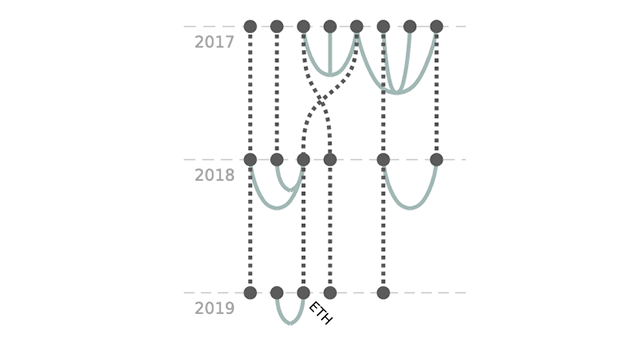Six methods for transforming layered hypergraphs to apply layered graph layout algorithms

Abstract
Hypergraphs are a generalization of graphs in which edges (hyperedges) can connect more than two vertices—as opposed to ordinary graphs where edges involve only two vertices. Hypergraphs are a fairly common data structure but there is little consensus on how to visualize them. To optimize a hypergraph drawing for readability, we need a layout algorithm. Common graph layout algorithms only consider ordinary graphs and do not take hyperedges into account. We focus on layered hypergraphs, a particular class of hypergraphs that, like layered graphs, assigns every vertex to a layer, and the vertices in a layer are drawn aligned on a linear axis with the axes arranged in parallel. In this paper, we propose a general method to apply layered graph layout algorithms to layered hypergraphs. We introduce six different transformations for layered hypergraphs. The choice of transformation affects the subsequent graph layout algorithm in terms of computational performance and readability of the results. Thus, we perform a comparative evaluation of these transformations in terms of number of crossings, edge length, and impact on performance. We also provide two case studies showing how our transformations can be applied to real-life use cases. A copy of this paper with all appendices and supplemental material is available at osf.io/grvwu.
Authors
Citation
Six methods for transforming layered hypergraphs to apply layered graph layout algorithms
Sara Di Bartolomeo, Alexis Pister, Paolo Buono, Catherine Plaisant, Cody Dunne, and Jean-Daniel Fekete. Computer Graphics Forum—EuroVis/CGF. 2022. DOI: 10.1111/cgf.14538
PDF | DOI | Supplement | BibTeX
Khoury Vis Lab — Northeastern University
* West Village H, Room 302, 440 Huntington Ave, Boston, MA 02115, USA
* 100 Fore Street, Portland, ME 04101, USA
* Carnegie Hall, 201, 5000 MacArthur Blvd, Oakland, CA 94613, USA


